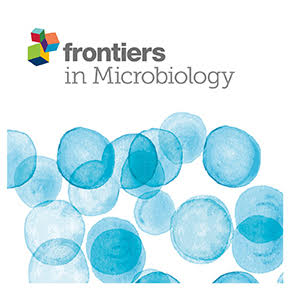Ver ítem
- xmlui.general.dspace_homeCentros e Institutos de InvestigaciónCICVyA. Centro de Investigación en Ciencias Veterinarias y AgronómicasInstituto de GenéticaArtículos científicosxmlui.ArtifactBrowser.ItemViewer.trail
- Inicio
- Centros e Institutos de Investigación
- CICVyA. Centro de Investigación en Ciencias Veterinarias y Agronómicas
- Instituto de Genética
- Artículos científicos
- Ver ítem
Wolbachia pipientis associated with tephritid fruit fly pests: from basic research to applications
Resumen
Members of the true fruit flies (family Tephritidae) are among the most serious agricultural pests worldwide, whose control and management demands large and costly international efforts. The need for cost-effective and environmentally friendly integrated pest management (IPM) has led to the development and implementation of autocidal control strategies. These approaches include the widely used sterile insect technique and the incompatible insect technique
[ver mas...]
Members of the true fruit flies (family Tephritidae) are among the most serious agricultural pests worldwide, whose control and management demands large and costly international efforts. The need for cost-effective and environmentally friendly integrated pest management (IPM) has led to the development and implementation of autocidal control strategies. These approaches include the widely used sterile insect technique and the incompatible insect technique (IIT). IIT relies on maternally transmitted bacteria (namely Wolbachia) to cause a conditional sterility in crosses between released
mass-reared Wolbachia-infected males and wild females, which are either uninfected or infected with a different Wolbachia strain (i.e., cytoplasmic incompatibility; CI). Herein, we review the current state of knowledge on Wolbachia-tephritid interactions including infection prevalence in wild populations, phenotypic consequences, and their impact on life history traits. Numerous pest tephritid species are reported to harbor Wolbachia infections, with a subset exhibiting high prevalence. The phenotypic effects
of Wolbachia have been assessed in very few tephritid species, due in part to the difficulty of manipulating Wolbachia infection (removal or transinfection). Based on recent methodological advances (high-throughput DNA sequencing) and breakthroughs concerning the mechanistic basis of CI, we suggest research avenues that could accelerate generation of necessary knowledge for the potential use of Wolbachia-based IIT in area-wide integrated pest management (AW-IPM) strategies for the population
control of tephritid pests.
[Cerrar]

Autor
Mateos, Mariana;
Martinez Montoya, Humberto;
Lanzavecchia, Silvia Beatriz;
Conte, Claudia Alejandra;
Guillén, Karina;
Morán-Aceves, Brenda M.;
Toledo, Jorge;
Liedo, Pablo;
Asimakis, Elias D.;
Doudoumis, Vangelis;
Kyritsis, Georgios A.;
Papadopoulos, Nikos T.;
Augustinos, Antonios A.;
Segura, Diego Fernando;
Tsiamis, George;
Fuente
Frontiers in Microbiology 11 : 1080 (Junio 2020)
Fecha
2020-06
Editorial
Frontiers Media
ISSN
1664-302X
Formato
pdf
Tipo de documento
artículo
Palabras Claves
Derechos de acceso
Abierto
 Excepto donde se diga explicitamente, este item se publica bajo la siguiente descripción: Creative Commons Attribution-NonCommercial-ShareAlike 2.5 Unported (CC BY-NC-SA 2.5)
Excepto donde se diga explicitamente, este item se publica bajo la siguiente descripción: Creative Commons Attribution-NonCommercial-ShareAlike 2.5 Unported (CC BY-NC-SA 2.5)


